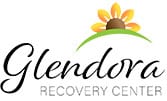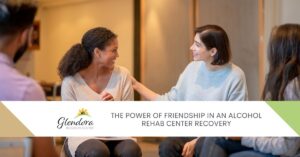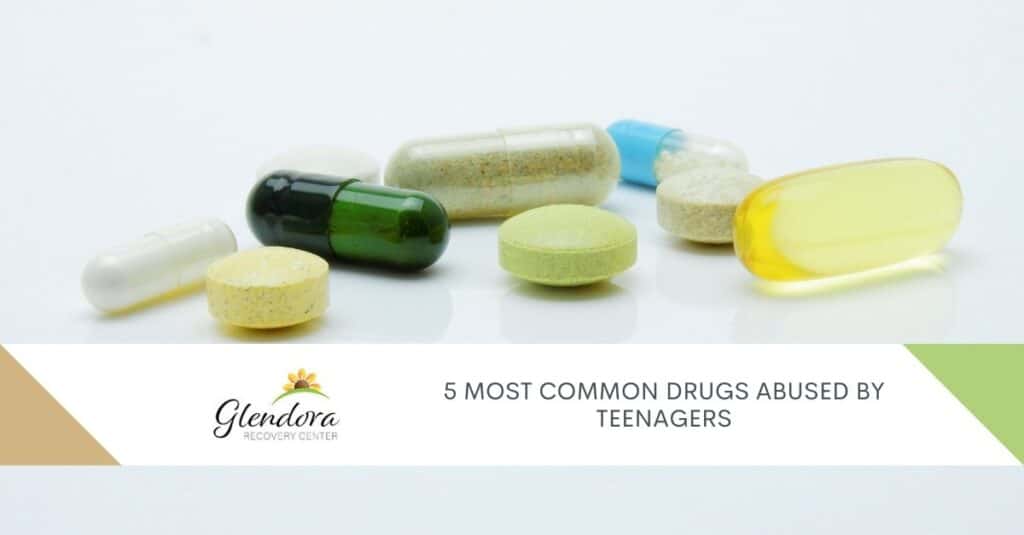When it comes to treating an addiction, various alternatives and methods are available.Teenagers tend to be more vulnerable to drug abuse due to a variety of factors that we’ll discuss in the following article, along with the 5 most common drugs abused by teenagers. Even though drug addiction is a reality for a lot of teenagers , fortunately, there are plenty of available treatment programs for teenagers at our drug rehab center. At Glendora Recovery Center, we try to not only provide a wide variety of quality rehab programs but also to provide accurate information to both patients and family members.
Addiction develops when the brain functions are altered by repeated drug use over time. The transformation from voluntary to compulsive drug use is due to changes in the brain’s natural network of inhibition and reward systems, which prevent a person from exerting control over the need to use drugs even when there are negative consequences—a defining trait of addiction.

1. Alcohol Addiction
When it comes to addiction, the prevalence of alcohol should come as no surprise. Even though it is illegal to sell alcohol to minors, it is widely available, especially since other adults can purchase alcohol for minors. Underage drinkers make up almost a quarter of the population. Alcohol is not only very frequent, it is still the most commonly used legal drug when it comes to addiction. It is found in wine, beer, and liquor and is produced by fermenting yeast. Even though teenagers don’t drink as often as adults (both in quantity and quality) , they often drink excessive amounts of alcohol under certain circumstances, such as parties. Alcohol is a depressant of the central nervous system and, especially in teenagers, can seriously affect brain development.
2. Marijuana
Yes. Marijuana is addictive, contrary to popular opinion. According to research, roughly 9% of marijuana users get addicted; this number rises among those who begin while they are young (to around 17%, or 1 in 6) and among daily users (to 25–50%).
Marijuana affects the reward system of the body by producing dopamine, which makes people feel joyful or high. Increased appetite (often known as “the munchies”), poor motor coordination, and difficulties thinking, understanding, and remembering things can all result from this elevated mood. The following are some of the health hazards related to marijuana: Chronic coughing, recurrent lung infections, and an elevated risk of lung cancer.
3. Prescription Medications
Prescription drug misuse is on the rise, particularly among young adults and teenagers. Because these drugs are frequently recommended by doctors, children are more likely to believe they are harmless or safe, which is far from the case. Current drugs that can be abused include stimulants like methylphenidate (drugs like Concerta and Ritalin), amphetamines (drugs like Dexedrine and Adderall), opioids like morphine, codeine, fentanyl, oxycodone (drugs like OxyContin), and hydrocodone (drugs like Vicodin), depressants like barbiturates (drugs like phenobarbital), and benzodiazepines.
Teens abuse the tablet forms of these medicines by consuming them orally, crushing them, and snorting or injecting them in some situations. Teens frequently take prescription drugs while simultaneously drinking alcohol to amplify the high—a dangerous combo due to the combined CNS depressive effects that can sometimes lead to death.
4. Heroin
As you may be aware, heroin, an opioid, is classified as a “hard drug” for a reason. It’s dangerous, just like other opioids, and the side effects can be severe and life threatening. Despite the euphoric short-term effects, such as a heavy feeling in the limbs and a warm flushing of the skin, heroin use can quickly become unpleasant. In most situations, it causes nausea, itching, and vomiting, as well as tiredness and impaired mental functioning. Long-term consequences from frequent usage can alter the physiology and structure of the brain, resulting in neuronal and hormonal abnormalities that are difficult to address without a comprehensive strategy.
5. Cocaine
Adolescent cocaine use is less common than marijuana use. Lower rates of cocaine usage among teenagers may be due to the drug’s limited availability compared to marijuana, since just 28% of 12th-grade students believe it is easy to obtain the drug. Furthermore, over 85% of teenagers disapprove of cocaine experimentation, which may limit use. Although cocaine is most commonly found in nightclubs and parties, it is not uncommon for teens to use cocaine at home or even school.
The Risk Factors
Many other risk factors play a role, including genetic predisposition, prenatal exposure to alcohol or other drugs, parental supervision or monitoring, and association with drug-using friends. Adolescents who have been subjected to physical or sexual abuse are more prone to developing substance use problems.
The biological risks of drug use on the maturing adolescent brain keep many teens in the danger zone once early risk factors open the door to addiction.
A Drug Abuse Solution…
If you suspect that someone you love or yourself is suffering from a drug addiction, contact us today at Glendora Recovery Center. To learn more about our drug abuse treatment programs and how the entire process works. Call us today at (626) 240-5056 to schedule an appointment with one of our professionals, and we’ll get you started on the road to recovery.






